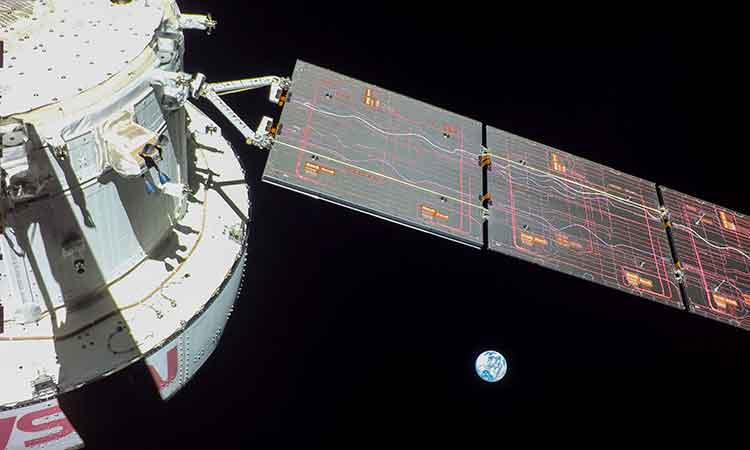Japan’s moon mission took a long time

An illustration of Smart Lander for Investigating Moon (SLIM) in a possible position on the moon.
It should come as a surprise that Japan, which had attained technological proficiency at the beginning of the 20th century and staked it all and lost in the Second World War, but regained its technological panache by the end of the 1950s, should have taken such a long time to set up its moon mission.
Its Smart Lander for Investigating Moon (SILM) had landed on the moon alright but its solar panels did not function. And the explanation is that it was the wrong angle and the sun’s rays are not targeted at the panels. The Japanese Aerospace Exploration Agency (JAEA) said that it takes a month for the moon’s movement to change the angle of light. It could be seen as a faulty mission as of now, but it is a common thing of all space journeys, including that of the Americans and Russians, that there are many failures before there is a success.
What is of interest is why Japan took a long time to get into the moon game and the space race. China and India, which were comparatively late starters, have progressed pretty fast, with China taking the lead, including setting up its own space station. The International Space Station (ISS), which was an American-Russian collaboration to begin with, is now serviced by private firms, with Elon Musk’s Space X providing the crew capsule carrying the astronauts to the ISS on its Falcon rocket providing the power and thrust.
Japan is already participating in the ISS through its astronauts. Japan has however chosen to do the moon exploration on its own, with America and Russia resuming their moon missions, and with India launching its own. So, there are three Asian nations with space programmes of their own – China, India, Japan. In terms of technological advantage, Japan could have been the first Asian country to take to the space programme.
The Japanese have been quite hesitant to assert their scientific and technical superiority since the defeat in the Second World War which ended with Japan suffering the nuclear holocaust when America dropped the first ever atom bombs on Hiroshima and Nagasaki, killing hundreds and thousands of civilians in the two cities, and leaving thousands more bearing the frightful radiation effects of the atom bomb blasts.
In the years after the Second World War, the Japanese put their heads down to rebuild the war-ravaged economy and made miraculous and meteoric recovery. Japan could have launched its space programme much earlier but it did not seem to evoke the hostile response of the world. But now that space has become an open frontier, and there is a renewed interest in the mineral resources of the moon, the Japanese do not want to let go the opportunity to be in the moon scramble for minerals.
Japan is a partner in the America-led Mars mission. More than the space exploration and inter-planetary journeys, the Japanese seem to have been drawn to the economic potential in the exploration of the moon.
Japan should perhaps give up its self-imposed diffidence and take a lead in Asia with providing the technological leadership to forge ahead in the space programme.
Apart from China and India, the other country which has invested in space exploration is the United Arab Emirates (UAE). There could be a consortium of Asian countries to make a collective foray into space. There are political hurdles on the way because of tense China-India and China-Japan relations. The Asian space alliance could be a boost because it does not necessarily have to be adversarial. While America and Europe have a natural affiliation, it should be possible for a similar formation in Asia.







